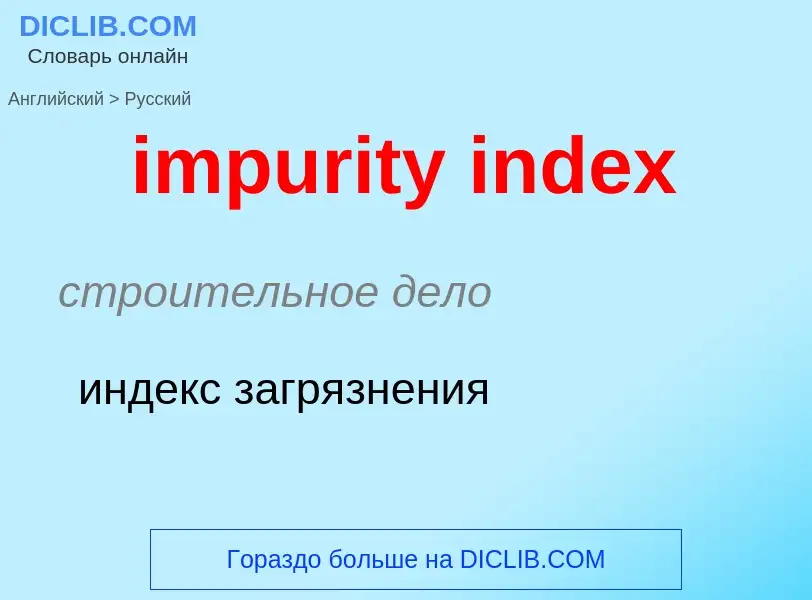Vertaling en analyse van woorden door kunstmatige intelligentie ChatGPT
Op deze pagina kunt u een gedetailleerde analyse krijgen van een woord of zin, geproduceerd met behulp van de beste kunstmatige intelligentietechnologie tot nu toe:
- hoe het woord wordt gebruikt
- gebruiksfrequentie
- het wordt vaker gebruikt in mondelinge of schriftelijke toespraken
- opties voor woordvertaling
- Gebruiksvoorbeelden (meerdere zinnen met vertaling)
- etymologie
impurity index - vertaling naar russisch
строительное дело
индекс загрязнения
['indeksiŋ]
общая лексика
индексация, индексирование
создание индексов
деление
индексация
индексирование
индексирующий
индицирование
нумерация
нумерование
существительное
техника
индексирование
деление окружности на части
периодическая круговая подача
программирование
индексирование (документов)
составление указателей
специальный термин
индицирование
приписывание индексов
Definitie
Wikipedia

In semiconductor physics, an acceptor is a dopant atom that when substituted into a semiconductor lattice forms a p-type region.
When silicon (Si), having four valence electrons, is doped with elements from group III of the periodic table, such as boron (B) and aluminium (Al), both having three valence electrons, a p-type semiconductor is formed. These dopant elements represent trivalent impurities. Other trivalent dopants include indium (In) and gallium (Ga).
When substituting for a silicon atom in the crystal lattice, the three valence electrons of boron form covalent bonds with three of the Si neighbours but the bond with the fourth remains unsatisfied. The initially electro-neutral acceptor becomes negatively charged (ionised). The unsatisfied bond attracts electrons from the neighbouring bonds. At room temperature, an electron from a neighbouring bond can jump to repair the unsatisfied bond thus leaving an electron hole, which is a place where an electron is deficient. The hole, being positively charged, attracts another electron from a neighbouring bond to repair this unsatisfied bond. This chain-like process results in the hole moving around the crystal as a charge carrier. This process can sustain in an electric current useful in electronic circuits.


